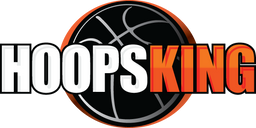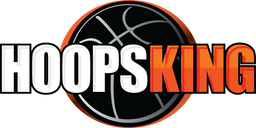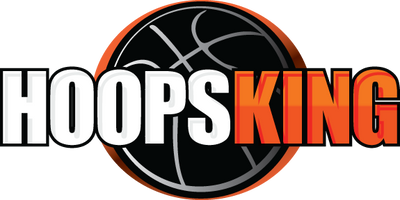If you love watching Steph Curry make threes, or seeing Westbrook driving the lanes and pushing the pace, or maybe you love how Rondo is delivering those passes around the court, then you love Point Guard Basketball.
In today's article we are going to talk about what is a Point-Guard, what are his responsibilities both offensively and defensively, what is his hierarchy in a team, what is his field of operations, and at the end, what are the different types of Point Guards in today's modern basketball.
What is a Point Guard?
The basic, the most important skills, and I might say that the must-have skills that every Point Guard needs to have are the good dribbling skills and good passing ability. We all know that after a defensive rebound, the majority of teams like to put the ball into Point Guard hands so he can now bring the ball up the court and organize the team on offense.
A Point Guard in basketball is supposed to be excellent at dribbling the ball and transcendent at passing so that they can generate opportunities for their teammates to score some baskets. Nevertheless, Point Guards need to be so much more than this. Point Guard is a team leader, a person that is setting the tone for the team, a figure that is keeping everybody involved, support for each and every other player on the team.
The point guard, on many occasions, is one of the best shooters on the floor and usually, he is the fastest player on the team.
Maybe the most important thing that we want our Point Guard to have is a good feel for the game and good vision. Basketball is the game of adaptations and constant pursuit for the other team weaknesses and the plots of how to exploit those flaws on our enemies. If our Point Guard can detect, adapt and work around those shortcomings of the opponents then our team is going to have an easier job winning the game. What am I talking about?
Let's say that the opponents have a big and strong center, who is much bigger and stronger than our bigs but, his flaw is that he is a bit slow with bad lateral movement. So, what we need to do is to try and get him out of the paint and make him play some perimeter defense. So, a good Point Guard is going to call a high central Pick and Roll action where he is going to search for a switch on defense. Now, there is a good chance of exploiting that bad lateral movement ability or pass the ball inside where our big is guarded by opposing point guard.
Your Chance to Train with a Top Point Guard Trainer is Here!
The Point Guard Elite System is a comprehensive package that will help you with every aspect of playing the Point Guard Position. Learn more here.
Point Guard Offensive Responsibilities
1. Bringing The Ball Up The Court
The point guard is traditionally held for bringing up the ball from defense to offense. If a team is good at boxing out, then the Point Guard is going to be the one to take the rebound and he can immediately turn and run towards the opposing basket. If not, then he needs to get open for a first pass from the rebounder. Sometimes, the defense is going to be very aggressive and in those situations, it is best to run to the rebounder and pick up the ball from his hands.
2. Controlling the Pace
Because point guard brings the ball up the court, they are directly responsible for setting the pace at the offensive end. The good Point Guard is going to know when to pick up the pace and he is going to know when to slow down. We all know that we should run against the slower and bigger teams and that we should slow down the offense against the fast switching teams, but also there are times when our team is going to miss 3 consecutive open shots and we are desperate for some easy buckets, so the point guard is going to make his team run in transition.
3. Calling Plays
It is said that the Point Guard is a coach's voice on the floor. We coach often see things from a different perception then our players, so what we do is we like to call plays just to put our guys in better scoring situations. We see what our players sometimes don't so it is our duty to help them. And how we do it? We talk with our Point Guards.
Calling plays is very important, and the most important part of doing this is the timing. A good Point Guard is going to think 3 steps ahead so right after our team gets the rebound he is going to scream a play so the other players can remember what they need to do while running from defense to offense.
And we certainly must not forget the defense. Sometimes the team is going to play man to man, sometimes the zone, and sometimes we want to try and trap the ball. Point Guard should be the one that is going to tell the others what to do and how to act.
4. Passing
The point guard needs to be proficient passer in basketball and arguably this is his most important skill. Keeping everybody involved is a crucial part of keeping good energy inside the team, so by giving them the ball the players are going to feel better so they are going to give more of them to the team. And we all know how important is the energy and good wills to win the game. We all know that a point is making one person happy, but the assist is making two players feel good.
5. Outside Shooting
The point guard requires to be able to get buckets from the deep. Why is this important? If the Point Guard is a good shooter, that means that he needs to be guarded close by his man and that on the pick and roll/pop actions or any kind of off-ball screen actions, defenders must switch. If there is a need for an aggressive defense, the geometry of the offense is better and there will be more miss matches created for your teammates.
6. Driving to the Basket
An elite point guard has the skillset to fool the defensive players, put them on skates, drive the lane by passing around them and create a shot for himself or for another player. We all know that the basketball is 5 on 5, but that really is 3 on 3 on the strong side of the offense. By passing the defender by taking him out with the dribble moves, Point Guard creates a 3 on 2 situations for his team.
Point Guard Defensive Responsibilities
Well, this is the tricky part for every Point Guard on the planet. Being the smallest person on the floor does not benefit much, so the defensive contribution is not going to be visible throughout the stats. The rebounding and blocked shots are not something Point Guards do (they do if you are Russel Westbrook) nor it is expected. The best way to impact the defense as a Point Guard is to put opposing Point Guard under pressure. By slowing him down, making him run more, dribble more, by initiating bad passes out of him, you are going to slow down and disrupt the offense so they are going to take out of rhythm or forced shots. Another good way to impact defense as a Point Guard is to help by closing penetration lanes. Because a Point Guard is the fastest player on the court, this should not be a big problem for him and the benefits are great.
Different Kind of Point Guards
1. Traditional Point Guard
This kind of Point Guard is the most balanced so we can call it all around point guard. For example, we are going to take Chris Paul of the Huston Rockets. Chris is all about control. He has the ability to do it all but he likes to work around every possibility given. His decision making is flawless and it goes with the fact that there are no flaws in his game. If he is alone he will drain a three, if you come close he is going to run around you. He can finish in any way possible with the accent on his mid-range pull-ups.
In his Huston Rockets years we saw his ability to adapt to that Morey/D"Antony shoot the tree whenever you can basketball, but at the same time we can see how good can he exploit the defense knowing that they need to be close and a bit in a high stance just to be able to put hand in the face for all those 3 point shots.
2. Pass First Point Guard
This kind of Point Guard is going to look to create a position for an assist on almost any play. Every action these players take is narrowed toward putting the ball into other players hands. The main characteristic of these Point Guards is the vision and the passing ability.
The guy that comes to my mind when we talk about excellent passers is Lonzo Ball. The kid sees everything and he is doing everything to make an assist. I just love that full-court passes where you can see that he is aware of the position of his players even before the ball is in his hands.
3. Score First Point Guard
I personally like to call these players Mamba Mentality Point Guards. These players have just one thing in mind, and that is to put the ball into the basket. This is my least likable group just because it has the potential to ruin the locker room. If a player who naturally has the ball most of the times at the same time likes to attack the rim all the time, that just means that the rest of the team is going to run up and down the court, set screens and play defense.
I mean, we all love to watch how Kyrie Irving is doing all those fancy stuff, and it really is impressive, but when he misses 3 consecutive shots we all can see how the team energy suddenly gets low.
But on the other hand, when he is getting buckets, its a feast for the eyes.
4. Defensive Prone Point Guard
Those are the players that we all love regardless of how talented they are on the offensive end. These guys are building momentums, motivation teammates, setting a tone, keeping the energy high and bringing the war to the floor each and every second of every game. It is contagious for a team to see that one man is scratching and grinding with all that he has so the other players are rising their defensive effort.
Man, I love to watch Patrick Beverley play. If you are not familiar with these players work, go and watch this years playoff where the Clippers faced the Warriors. O man how he fought Durant. Just watch it. You are going to enjoy every play of that series.
5. Point Forward
LeBron James is the creator of this newly formed position in basketball. Some will say that Magic was the first big guy to play Point, but let's just say that Magic could not play PF in his era. With the progression of a game towards the position-less game, the King introduced that the player with the body of 6.8ft, 250lbs can dribble, drive and pass as good as any point guard in the history of the sport. Yes, he is using his athleticism to dominate the game, but if you look at the aesthetics, you'll see a Point Guard mind trapped in the Power Forward body.





